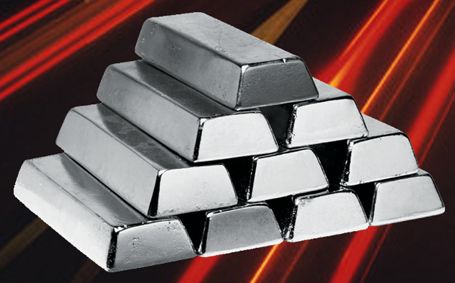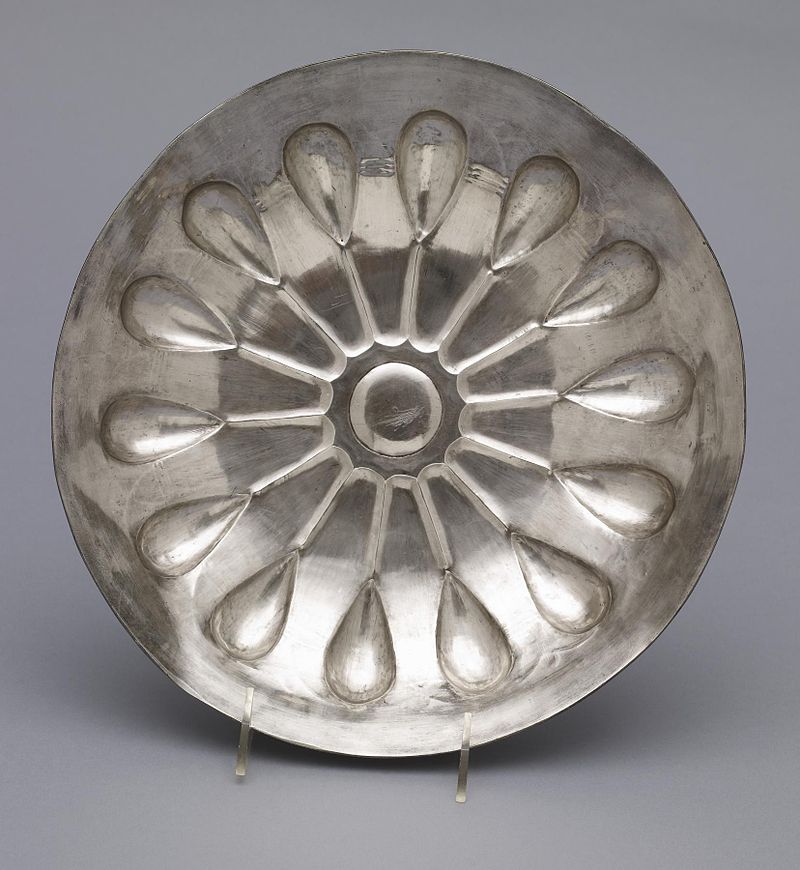

| Symbol: | Ag |
| Melting point: | 961.8'C |
| Electron configuration: | [Kr]4d105s1 |
| Atomic number: | 47 |
| Atomic mass: | 107.8682u |


| Ore | Common Name | Formula |
|---|---|---|
| Sulphide | Argentite/Silverglance | Ag2S |
| Stephanite | Ag5SbS4 | |
| Pyrargyrite | Ag3SbS3 | |
| Proustite | Ag3AsS3 | |
| Freislebenite | [Pb,Ag]8,Sb5S12 | |
| Polybasite | [Ag,Cu]16[Sb,As]2S11 | |
| Tellurid | Hessite | Ag2Te |
| Chloride | Cerorgyrite/Homsilver | AgCl |
The major producers of silver are Mexico, Peru, Canada, USA, Australia, Russia, and Poland. Silver is used in making coins, jewelry, and decorative items. It is also alloyed with copper to make coins and plates. Plating of silver is carried out on plates, mirrors and equipments. It is also used in preparation of silver compounds. It is used in photography and medicine. Silver amalgam is used in dental surgery. Silver metal and alloys are also used in electrical and electronic components. A compound of silver like silver oxide is used in glass manufacturing as a pigment. It is also used in watches and calculators as solid electrolyte. Silver sulphide is used in chemicals. Silver chloride and Silver bromide are used in photography. Alloys of silver are also used for various purposes. Coinage silver contains 90% silver and 10% copper. It is used for making coins. Silver solder contains 63% of silver, 30% of copper and 7% of zinc. It is used in high voltage electrical devices. Palladium silver contains 40% silver and 60% palladium. It is used in potentiometer and some measuring instruments. Dental silver alloys are used in dental surgery. It contains 33% of silver, 52% of mercury, 12.5% of tin, 2% of copper and 0.5% of zinc.
Refining of silver is carried out by electrolysis. Silver dissolves from the anode and deposits at the cathode. The impurities in the anode remain undissolved and therefore enter into anodic sludge. Silver nitrate is the major constituent of the bath. It is acidified with nitric acid. Nitric acid raises the conductance of the bath. The acid consumed during the electrolysis has to be replaced regularly. The anode contains silver in a canvas bag. The canvas bag prevents the anode mud from mixing with the deposited silver. Cathodes are of pure silver sheet. When current flows, silver dissolves from the anode and deposited on the cathode. The electrolyte is stirred by a wooden scraper. The silver crystals deposited on the cathode are scrapped and separated from the electrolytic cell. The silver separated from the cell is washed with clean water to remove the electrolyte. The silver crystals are melted in a high frequency induction furnace. Melting is carried out under a layer of charcoal. The oxygen entered during melting is removed as carbon dioxide and carbon monoxide. The silver metal melt is cast into bars with 99.9 percent of purity. Other metals are recovered by heating the insoluble residue with sulphuric acid after treatment with aquaregia.